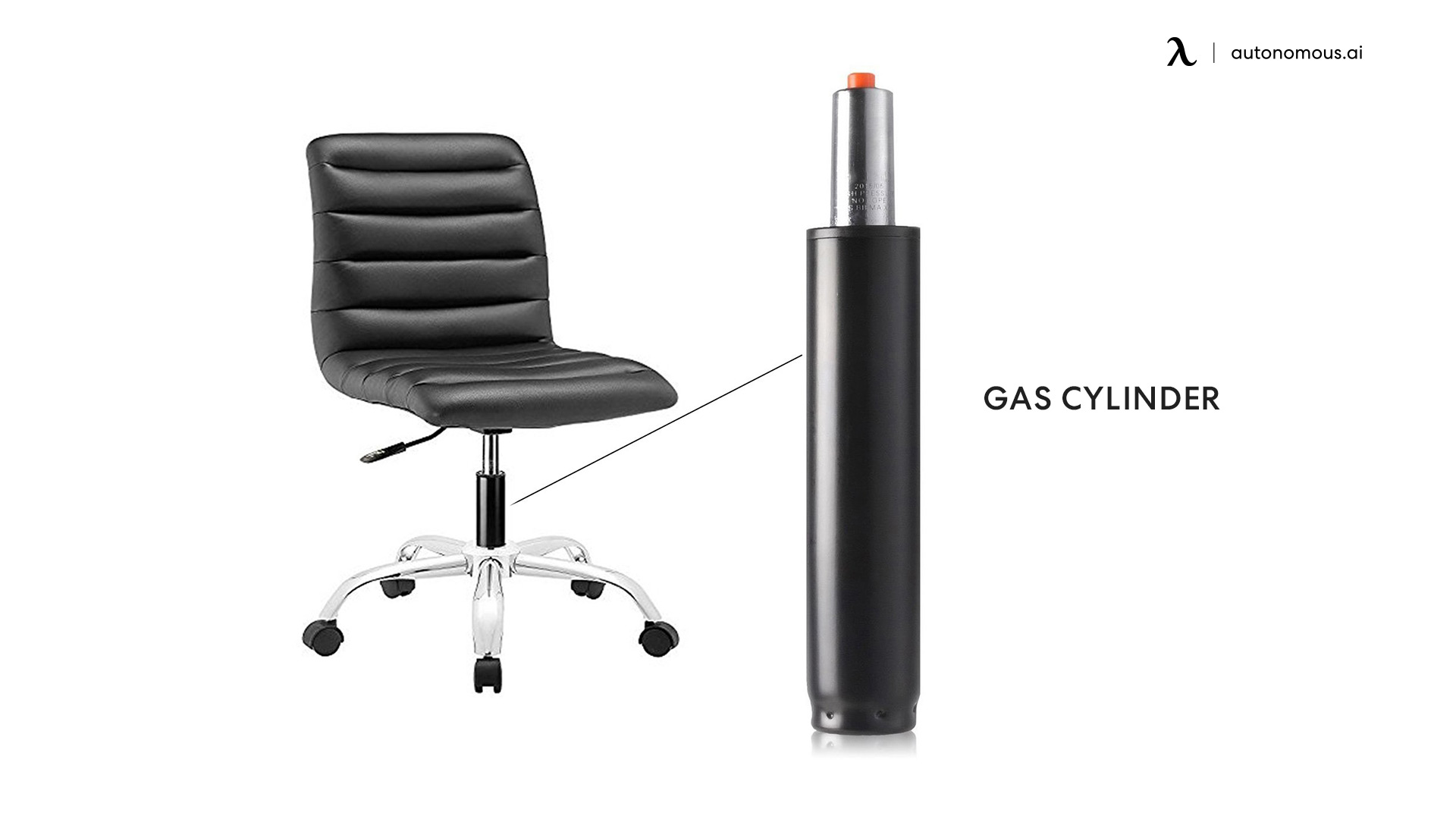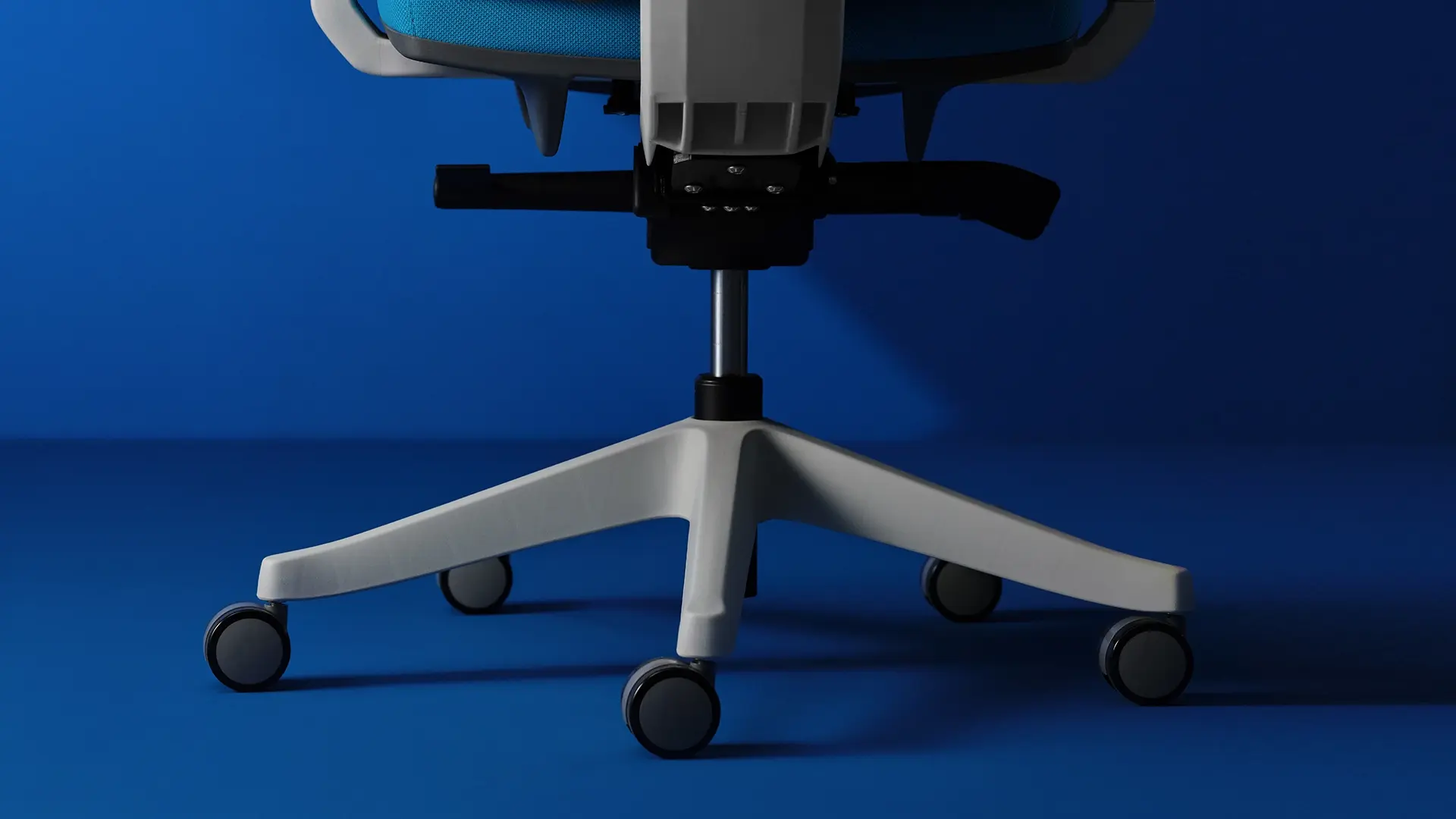
Does Office Chair Explosion Really Happen? Facts & Solutions
Table of Contents
Office chair explosions may sound like urban legend, but they’ve happened—and when they do, the results can be severe. In a world where comfort and ergonomic design are a priority, many don’t realize that some adjustable chairs carry a hidden risk beneath the seat. This risk lies in the gas lift mechanism that powers your chair’s up-and-down movement.
This article breaks down everything you need to know about office chair explosions—what causes them, how often they occur, and most importantly, how to avoid one.
Can Office Chairs Explode?
Yes, office chair explosions can happen, but they are extremely rare. The vast majority of chairs in use today are safe when properly manufactured and used within guidelines. Still, a handful of reported accidents—including a few fatal ones—prove that under certain conditions, the gas cylinder inside a chair can fail catastrophically.
These incidents typically involve the gas lift cylinder, a sealed metal tube filled with pressurized nitrogen. When that seal breaks, the pressure inside can eject metal fragments or even shoot the piston with dangerous force.

Documented Incidents: What Has Actually Happened?
Several high-profile cases have raised awareness around this risk:
- 2009, China: A 14-year-old boy was killed when the gas cylinder in his chair exploded. Metal fragments pierced his lower body, leading to fatal bleeding.
- 2013, China: A woman was injured while sitting in her chair, which exploded under her as she dried her hair. She survived after surgery removed pieces of plastic and metal embedded in her skin.
- 2008, Unknown Location: A man sustained injuries to his arms and back when a steel rod from the chair’s base launched upward and hit the ceiling.
These cases, while tragic, are isolated. Most involved low-cost, uncertified chairs manufactured without proper safety testing.
Why Do Office Chairs Explode?
1. Defective or Low-Quality Gas Cylinders
The most common cause behind an office chair explosion is a faulty or substandard gas lift mechanism. Many low-cost chairs use cheap components that fail to meet basic safety regulations. These defective cylinders can crack, leak, or rupture under pressure—especially after prolonged use.
Reputable brands use components that comply with ANSI/BIFMA or TÜV standards, ensuring the cylinder can withstand daily adjustments and weight fluctuations. In contrast, poorly manufactured chairs may skip critical testing, increasing the likelihood of a malfunction or failure.
To understand exactly how these systems work and why quality matters, take a look at this detailed breakdown of the office chair cylinder. It explains the internal components, pressure mechanism, and the role each part plays in both comfort and safety.
Spending a little more on a chair with a high-quality gas lift isn’t just about comfort—it’s a vital investment in your physical safety.
2. Overloading
Every office chair is designed with a specific weight threshold. Exceeding that capacity—especially during sudden movements or reclines—places excessive strain on the lift mechanism, increasing the risk of a gas cylinder rupture. For most users, a standard chair weight capacity of 250 to 300 lbs is sufficient. However, individuals who require stronger support should consider alternatives.
Opting for a heavy duty office chair helps prevent overloading and enhances long-term durability. These models are engineered with reinforced frames and upgraded cylinders to handle more pressure safely. If seat width is also a concern, choosing an extra wide office chair ensures both comfort and balanced support.
For heavier users, look for models with increased thresholds such as an office chair 300 lbs or an office chair 400 lb weight capacity. For industrial-grade support, options like heavy duty office chairs 600 lbs and even heavy duty office chairs 1000 lbs exist for specialized needs.
Choosing the correct chair for your body type is one of the most effective ways to prevent an office chair piston explosion and ensure lasting performance.
3. Improper Repairs or Modifications
While it's tempting to troubleshoot a faulty chair yourself, especially when it's wobbling or sinking, DIY fixes can sometimes do more harm than good. Attempting to refill, tamper with, or disassemble the gas lift can damage the pressure seal and compromise the entire system—potentially leading to an office chair cylinder explosion.
Before reaching for your tools, make sure you understand the components you're dealing with. This office chair parts diagram is a good place to start, helping you identify which parts are safe to handle and which are better left untouched. If your issue involves instability, check out this guide on how to fix office chair for safe adjustments.
In cases where parts are broken or worn out, it's safer to source office chair replacement parts rather than modifying existing ones. If disassembly is required, follow a safe and informed guide on how to disassemble office chair, especially if you're replacing a base—this walkthrough on how to remove office chair base can help.
One of the most common frustrations is when your chair slowly sinks. If you're dealing with this, here's exactly why does my office chair keep going down and what you can do about it safely.
Remember: if you're not confident in the fix or it involves the gas lift mechanism, it's often safer—and cheaper in the long run—to replace the chair altogether.
4. Aging and Corrosion
After years of use, cylinders can rust, leak, or degrade. A weakened seal increases the chance of sudden failure.
5. Friction and Misalignment
If the cylinder is misaligned or poorly installed, internal friction could build up heat, weakening structural components.
6. Extreme Temperatures
Prolonged exposure to very high or low temperatures can compromise the performance of materials used in office chairs. Heat can cause the gas inside the cylinder to expand, increasing internal pressure, while cold may lead to contraction and stiffening of seals—both scenarios can accelerate wear or even trigger an office chair piston explosion in faulty units.
Understanding how different components respond to environmental conditions is key to maintaining a safe workspace. For instance, the office chair materials used in the seat and frame—whether mesh, leather, or plastic—can also degrade when exposed to extreme temperatures over time.
To minimize risk, keep your chair in climate-controlled environments that align with the average office temperature recommended for workplace comfort and equipment stability. A controlled indoor temperature not only protects your comfort and productivity but also extends the life of your chair’s internal mechanisms.

Types of Chair Cylinders: Gas vs Hydraulic
Feature | Gas Cylinder | Hydraulic Cylinder |
Mechanism | Uses compressed nitrogen gas to adjust chair height | Uses liquid (usually oil) to create pressure |
Common Usage | Widely used in office, ergonomic, and gaming chairs | Less common; used in industrial or high-end furniture |
Height Adjustment | Quick and smooth with a lever | Smooth but slightly slower adjustment |
Risk of Explosion | Rare but possible if poorly made or damaged | Very low; no gas pressure involved |
Maintenance | May degrade with time (gas leaks, rust) | Typically lower maintenance needs |
Cost | More affordable and widely available | Usually more expensive |
Safety Concerns | Risk of piston explosion in rare cases | Minimal safety risks related to pressure |
Preferred For | Ergonomic design, affordability, everyday use | Heavy-duty use, enhanced stability, long-term durability |
Most ergonomic and gaming chairs today use gas cylinders. The risk of office chair piston explosion comes specifically from this type of mechanism.
What Happens During an Office Chair Explosion?
Injuries to Users:
- Puncture wounds from flying debris
- Lacerations from fractured plastic or metal
- In rare cases, fatal bleeding
Damage to Property:
- Impact to floors, ceilings, or nearby objects
- Equipment damage (monitors, desks, etc.)
Legal and Financial Repercussions:
- Workplace injuries can lead to liability claims
- Potential lawsuits or OSHA fines for companies
Office Chair Explosion Safety: What You Can Do
Signs Your Chair May Be at Risk:
- Hissing sounds from the cylinder
- A wobbly or unstable base
- Visible rust or corrosion on the lift
- Loose or missing screws
- Cracks in plastic housing around the base or seat
Preventive Measures:
- Buy Certified: Choose chairs tested to ANSI/BIFMA or TÜV safety standards.
- Stick to the Weight Limit: Never exceed the manufacturer’s max capacity.
- Inspect Regularly: Check bolts, gas lifts, and structure every few months.
- Replace Aging Chairs: Most cylinders last 5–10 years. Don’t stretch it.
- Avoid Repairs on Gas Cylinders: Replace rather than fix pressurized components.
Emergency Preparedness for Offices
If you manage a workspace, here’s what to have in place:
- Evacuation Plan: Ensure all employees know exit routes and safety points.
- First Aid Training: Equip team members to respond quickly to injuries.
- Incident Reporting System: Track near misses to address systemic issues.
- Routine Inspections: Include chairs in safety walkthroughs every quarter.
FAQs
Q1: Can office chairs explode?
Yes, though very rare, office chairs with gas cylinders can explode due to defects, misuse, or aging.
Q2: How often do office chairs explode?
Extremely rarely. Among millions of chairs in use, only a handful of cases have been reported globally in the last 20 years.
Q3: What causes office chair explosions?
Common causes include poor manufacturing, corrosion, overloading, or incorrect use and installation of gas lift cylinders.
Q4: Are gas lift chairs safe?
Yes, especially if purchased from a reputable brand with proper safety certifications. Issues mostly arise in cheap, uncertified models.
Q5: Can a chair explode from heat?
Unlikely, but high heat can expand the gas and weaken seals over time, especially if the chair is already compromised.
Q6: Is a hissing sound from my chair dangerous?
Yes. Stop using the chair immediately—it may indicate gas leakage from the cylinder.
Q7: Can I replace a gas lift myself?
You can, but it’s risky without proper knowledge or tools. Incorrect installation increases accident risk. Seek professional help when possible.
Q8: Are hydraulic chairs better than gas lift chairs?
Hydraulic lifts don’t carry the same risk of gas expansion, but they’re bulkier and more expensive. A high-quality gas lift chair is generally safe.
Q9: What should I do if my chair is over 10 years old?
If it’s still functioning well and passes visual and mechanical inspection, it may be okay. But cylinders can degrade internally, so replacing it is the safer option.
Q10: What brands should I avoid?
Avoid no-name or extremely cheap brands that lack safety certification or reviews. Always look for verified manufacturers.
Final Thoughts
An office chair cylinder explosion is an unsettling concept—but it’s important to keep it in perspective. The overwhelming majority of gas lift chairs are safe, durable, and reliable when used correctly. Most incidents stem from unregulated manufacturing, poor-quality materials, or improper use—not from everyday, certified models.
To stay safe, focus on what you can control: buy from trusted brands, respect weight limits, avoid tampering, and replace aging chairs when needed. Whether you're browsing for the best office chair on Amazon or considering an expensive office chair brand that prioritizes engineering and safety, your investment should support both comfort and peace of mind.
In the end, comfort and safety don’t have to be a trade-off—they should go hand in hand.
Bleiben Sie mit uns in Verbindung!
Abonnieren Sie unsere wöchentlichen Updates, um über unsere neuesten Innovationen und Community-Neuigkeiten auf dem Laufenden zu bleiben!
Interesse an einer Linkplatzierung?
.svg)



/https://storage.googleapis.com/s3-autonomous-upgrade-3/production/ecm/230914/bulk-order-sep-2023-720x1200-CTA-min.jpg)

/https://storage.googleapis.com/s3-autonomous-upgrade-3/production/ecm/230824/EthanJohnson-ffebe8b4-4650-46f9-a3b3-ed980acaad86.jpg)